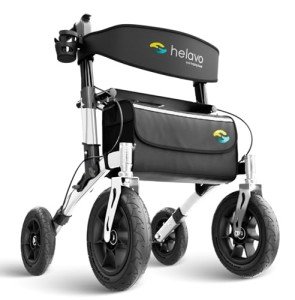15 Walking Aid Benefits Everyone Must Be Able To

Understanding Walking Aids: Enhancing Mobility and Independence
Walking aids play a crucial function in improving mobility and self-reliance for individuals with differing degrees of physical restrictions. They can substantially improve the lifestyle by supplying support, stability, and self-confidence when moving. This article checks out the various types of walking help, their benefits, factors to think about when choosing one, and responses to often asked questions to help assist those seeking assistance.
Types of Walking Aids
Walking help come in various forms, each developed to accommodate particular needs. Let's take a better take a look at some typically used walking aids:
| Type of Walking Aid | Description | Ideal For |
|---|---|---|
| Canes | A single stick that offers support and balance, usually made from wood or aluminum. | Individuals with mild instability or needing minimal support. |
| Walkers | Frames with four legs that supply stability and support for people who need more assistance than a cane can offer. | Individuals with moderate mobility problems or recuperating from surgical treatment. |
| Rollators | Comparable to walkers but equipped with wheels, handbrakes, and a seat for resting. | Individuals who need mobility support however can stroll short distances. |
| Crutches | 2 long poles that provide support by putting weight on the arms. They typically need strength and coordination. | People recuperating from leg or foot injuries. |
| Mobility Scooters | Electrically powered scooters designed for individuals with substantial mobility impairments. | People who can not walk fars away or have serious physical restrictions. |
Benefits of Using Walking Aids
Including a walking aid can lead to various advantages, including:
- Increased Stability: Walking aids assist minimize the risk of falls by offering extra support and balance.
- Enhanced Independence: Individuals can perform day-to-day activities with higher ease and self-confidence, reducing the requirement for assistance from others.
- Discomfort Relief: Some walking aids help minimize pain in the joints, such as hips or knees, by rearranging weight.
- Enhanced Posture: Many walking help encourage much better posture, which can result in reduced strain on muscles and joints.
- Exercise: An appropriate walking aid motivates individuals to stay active, promoting cardiovascular health and total wellness.
Factors to Consider When Choosing a Walking Aid
Picking the ideal walking aid is vital for maximizing its advantages. Here are a number of aspects to think about:
- Level of Mobility: Assess the person's ability to stroll independently and determine the degree of support necessary.
- Physical Strength: Consider upper body strength, as some help need more muscular control (e.g., crutches).
- Environment: Evaluate both indoor and outdoor environments to figure out the very best kind of walking aid based upon surfaces and barriers.
- Height and Size: Ensure that the walking aid fits the user correctly. The majority of help have adjustable height settings.
- Weight Capacity: Be conscious of the weight limits of different help to avoid possible mishaps or malfunctions.
Popular Walking Aids: A Quick Comparison
For a more streamlined view of popular walking help, here's a table comparing their viability for various requirements:
| Walking Aid Type | Support Level Needed | Perfect User Type | Weight Capacity | Portability |
|---|---|---|---|---|
| Walking sticks | Low | Seniors, mild injuries | Up to 300 pounds | High |
| Walkers | Moderate | Post-operative, neuromuscular conditions | As much as 400 pounds | Medium |
| Rollators | Moderate to High | Elderly, active people needing rest | As much as 300 lbs | Medium |
| Crutches | Moderate to High | Injuries or surgical treatments | Differs widely | Medium |
| Mobility Scooters | High | Limitations in leg strength | Approximately 500 pounds | Low |
Regularly Asked Questions (FAQs)
1. How do I know if I need a walking aid?It is recommended to
seek advice from a health care expert or physiotherapist if you experience difficulty walking, balance problems, frequent falls, or joint discomfort. Outdoor Walker can recommend the best kind of aid for your scenario. 2. How should I use a walking cane properly?Position the walking cane on the side opposite to the injury or weakness. Hold it with the hand on that side while the walking stick supports motion on the hurt side. Normally, the walking cane should move on with the hurt leg. 3. Can I utilize several walking aids?Yes, people might shift in between variousaids based upon their mobility requires at any
time. For example, an individual might utilize a walker in your home however transition to a cane when walking brief distances outdoors. 4. How do I maintain my walking aid?Regularly check for wear and tear, especially on rubber suggestions for canes/walkers, and guarantee wheels on rollators and scooters are working properly. Cleaning up can help lengthen the life of the aid. 5. Will insurance cover the cost of a walking aid?In lots of cases, health insurance coverage or Medicare might cover part or all of the expense of a clinically necessary walking aid.
It is necessary to talk to your insurance coverage company for particular guidelines. Walking aids are necessary tools that enable people to gain back self-reliance and improve their mobility. The proper selection based upon individual needs and preferences can cause significant enhancements in quality
of life. With a variety of choices available, people and caretakers should evaluate their distinct situations thoroughly to select the most appropriate walking aid. Whether it's a simple walking stick for support or a mobility scooter for those with extreme constraints, the right walking aid can make all the distinction in accomplishing much better mobility, safety, and ultimately, a more active way of life.

